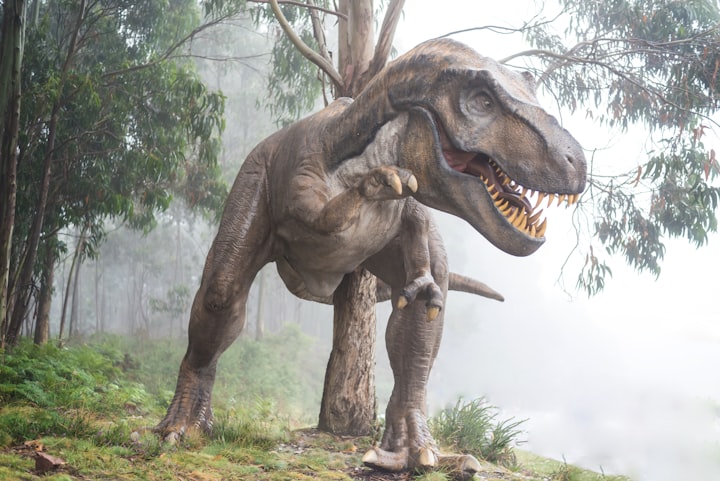Bringing Extinct Animals Back to Life
Ethical Implications and Scientific Advancements

The Earth's history is marked by the rise and fall of countless plant and animal species. Due to factors such as climate change and human interventions, many of these species have faced extinction, leaving a void in our ecosystems and a sense of loss for the scientific community. However, recent advancements in genetics and cloning technology have opened up the possibility of bringing some of these extinct creatures back to life. While the concept of resurrecting extinct animals is intriguing, it also raises complex ethical questions. In this article, we explore the top 20 animals that scientists are ready to bring back, the methods they use, and the ethical considerations that surround de-extinction efforts.
1. The Dodo: A Symbol of Lost Wildlife
The dodo, a flightless bird endemic to Mauritius, became extinct around 400 years ago due to human interference. Today, scientists are exploring the possibility of bringing back the dodo by collecting DNA samples and implanting them into their closest relative, the pigeon. This process, known as de-extinction, aims to revive the dodo's genetic legacy and potentially reintroduce the species to its natural habitat.
2. The Ground Sloth: A Giant from the Past
The ground sloth, a massive creature that roamed the Earth around 8,000 years ago, is another candidate for de-extinction. Scientists have managed to extract DNA from well-preserved specimens, but the main challenge lies in finding a suitable surrogate mother, given the sloth's large size. Artificial wombs are being considered as a potential solution to this problem.
3. The Woolly Mammoth: An Ice Age Icon
One of the most famous extinct animals, the woolly mammoth, lived in the Arctic region until about 4,000 years ago. Fossil discoveries have provided scientists with well-preserved DNA, enabling them to create hybrid embryos of woolly mammoths and elephants, known as "mammophants." The goal is to reintroduce these creatures to restore ecosystems and combat climate change.
4. The Neanderthal: A Controversial Prospect
Among all the de-extinction candidates, the resurrection of Neanderthals raises the most ethical debates. As a subspecies of modern humans, they share similarities with us, making the cloning process relatively straightforward. However, the implications of reviving an extinct hominid species and the ethical considerations surrounding their potential treatment and rights present significant challenges.
5. The Woolly Rhinoceros: A Furry Extinct Beauty
The woolly rhinoceros, a cousin of the modern rhinoceros, lived in the Arctic about 10,000 years ago. Thanks to the preservation of specimens in permafrost, scientists have access to viable DNA for de-extinction efforts. The goal is to revive these magnificent creatures and potentially reintroduce them to their former habitats.
6. The Baiji River Dolphin: A Fresh Extinction
The baiji river dolphin, native to China's Yangtze River, was declared functionally extinct in 2006 due to human activity. De-extinction efforts have focused on using recent DNA samples to bring back this beloved aquatic species, but the polluted state of their natural habitat poses challenges for their reintroduction.
7. The Moa: Enormous Flightless Birds
The moa, the largest known birds in history, were native to New Zealand and became extinct around 600 years ago due to human hunting. Researchers have extracted DNA from well-preserved feathers and eggs, offering a chance for their revival and potential reintroduction into the ecosystems they once inhabited.
8. The Irish Elk: A Majestic Extinct Deer
The Irish elk, also known as the giant deer, lived during the Ice Age and went extinct about 12,000 years ago. Well-preserved fossils have been found in Siberia, raising the possibility of using their DNA to recreate these magnificent creatures and potentially reintroduce them to suitable habitats.
9. The Heath Hen: Conservation Efforts at Play
The heath hen, once abundant in the northeastern United States, faced aggressive hunting, leading to its extinction in 1932. Conservationists aim to restore this bird through genetic technology by using available DNA to resurrect the species and reintroduce it to its former range.
10. The Gastric Brooding Frog: A Unique Birthing Process
The gastric brooding frog, native to Australia, became extinct in the 1980s due to chytrid fungus. Scientists have initiated the "Lazarus Project" to clone this frog and revive the species, hoping to achieve successful embryonic development.

The prospect of bringing extinct animals back to life raises a plethora of ethical considerations, scientific challenges, and conservation opportunities. While the idea of seeing long-lost creatures roam the Earth once more is captivating, it is essential to carefully weigh the environmental impact, ethical concerns, and potential unintended consequences of de-extinction efforts. As scientists continue to push the boundaries of genetic technology, society must engage in informed and ethical discussions to determine the path forward for de-extinction and its implications for biodiversity conservation.






Comments
There are no comments for this story
Be the first to respond and start the conversation.